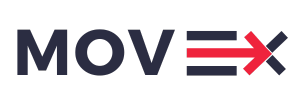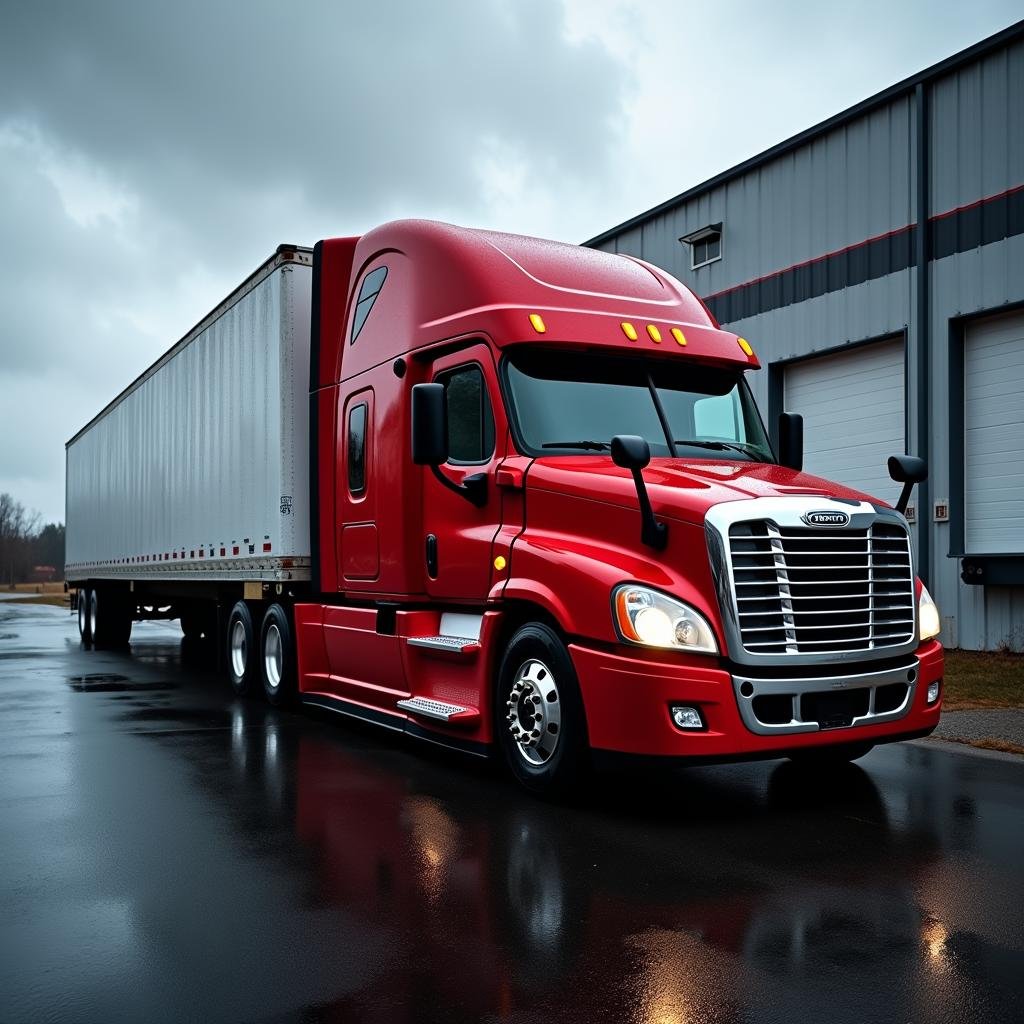Navigating the world of international transportation careers can be both exciting and challenging. For those interested in pursuing truck driving opportunities in the United States, understanding the various truck driver visa options is essential. The transportation industry in America faces a significant driver shortage, with estimates suggesting a deficit of over 80,000 drivers nationwide. This shortage has opened doors for qualified foreign drivers seeking work opportunities in the U.S., but the process requires careful navigation of complex immigration pathways.
Whether you’re an experienced driver from abroad looking to relocate or a transportation company interested in international recruitment, knowing which visa programs are available, their requirements, and application processes can make all the difference in your success. This comprehensive guide breaks down everything you need to know about truck driver immigration options in the United States.
Understanding the U.S. Truck Driver Shortage and Foreign Worker Demand
The American trucking industry has been experiencing a critical driver shortage for several years. According to the American Trucking Association, the shortfall reached a historic high of over 80,000 drivers in 2021, with projections suggesting this gap could exceed 160,000 by 2030 if current trends continue.
Several factors have contributed to this growing shortage:
- An aging workforce, with the average truck driver now in their mid-50s
- High turnover rates due to challenging working conditions
- Increased demand for freight transportation, especially following e-commerce growth
- Stricter safety regulations that limit driving hours
- Difficulty attracting younger workers to the profession
This shortage creates significant opportunities for foreign drivers who possess the necessary qualifications and are willing to navigate the immigration process. For trucking companies, international recruitment has become an increasingly viable strategy to address staffing challenges while maintaining operational capacity.
Primary Visa Options for Foreign Truck Drivers
While no visa category exists specifically for truck drivers, several visa programs can accommodate qualified international drivers seeking employment in the United States. Each option has distinct requirements, limitations, and processes.
H-2B Temporary Non-Agricultural Worker Visa
The H-2B visa is one of the most common truck driver visa options used by transportation companies. This program allows U.S. employers to bring foreign nationals to fill temporary non-agricultural jobs.
Key requirements and limitations:
- Employers must demonstrate that there are not enough U.S. workers who are able, willing, qualified, and available to perform the temporary work
- The employment must be genuinely temporary (seasonal, peak-load, intermittent, or one-time need)
- Annual cap of 66,000 visas, though additional allocations are sometimes made available
- Valid for up to one year, with possible extensions up to a maximum of three years
- Requires labor certification from the Department of Labor
The H-2B process requires significant lead time, as employers must complete labor market testing, file a temporary labor certification application, and then petition for the visa. The seasonal or temporary nature requirement can be challenging for trucking companies that need year-round staff.
TN Visa for Canadian and Mexican Professionals
Under the United States-Mexico-Canada Agreement (USMCA, formerly NAFTA), Canadian and Mexican citizens may qualify for TN status to work in certain professional categories.
Key considerations:
- Limited to citizens of Canada and Mexico
- The professional category that most closely aligns with truck driving is “Scientific Technician/Technologist”
- Requires specialized knowledge and often post-secondary education
- Initial period of stay up to three years with unlimited renewals possible
- No annual cap on the number of TN visas
While this option offers flexibility for qualified applicants from these countries, fitting truck driving into the approved professional categories can be challenging. Typically, TN status works best for specialized technical roles within the transportation industry rather than standard truck driving positions.
EB-3 Employment-Based Immigration
The EB-3 visa category includes options for skilled workers, professionals, and unskilled workers (EB-3C), the latter of which may apply to truck driving positions.
Key features:
- Offers permanent residency (green card) rather than temporary status
- Requires labor certification proving no qualified U.S. workers are available
- Processing times are lengthy, often taking several years
- No requirement for the position to be temporary
- Annual numerical limitations apply
The primary advantage of the EB-3 pathway is that it leads to permanent residency, allowing drivers to remain in the U.S. indefinitely. However, the extended processing times make this option less suitable for immediate staffing needs.
Qualification Requirements for Foreign Truck Drivers
Beyond meeting visa eligibility criteria, foreign truck drivers must satisfy numerous professional requirements to legally operate commercial vehicles in the United States.
Commercial Driver’s License (CDL) Requirements
All truck drivers in the U.S., regardless of citizenship status, must obtain a valid Commercial Driver’s License (CDL). For foreign drivers, this process includes:
- Obtaining a U.S. Social Security Number (once authorized to work)
- Establishing residency in the state where applying for the CDL
- Passing written knowledge tests on driving regulations and safety
- Completing practical skills tests with the appropriate class of vehicle
- Meeting medical fitness standards
- Obtaining appropriate endorsements for specific types of driving (hazardous materials, passenger transport, etc.)
In most cases, foreign driver’s licenses and CDL equivalents are not directly transferable to the U.S., though some experience may help with the practical aspects of the testing process.
English Language Proficiency
Federal regulations require all CDL holders to read and speak English sufficiently to:
- Understand highway traffic signs and signals
- Respond to official inquiries
- Complete reports and records
- Communicate with the public and law enforcement
This requirement often poses a significant hurdle for non-native English speakers. Many potential drivers benefit from English language training prior to pursuing U.S. driving opportunities.
Medical and Background Requirements
Additional requirements include:
- Passing a Department of Transportation (DOT) medical examination
- Drug and alcohol testing
- Clean driving record (traffic violations in other countries may impact eligibility)
- Criminal background check
These requirements apply to all commercial drivers but may present additional complications for foreign nationals who need to provide international records or undergo equivalent testing.
Application Process and Timeline for Truck Driver Visas
Securing appropriate work authorization for international truck drivers typically follows a multi-step process that varies by visa type. Understanding the timeline and procedures is crucial for both employers and prospective drivers.
H-2B Visa Process
For temporary positions using the H-2B program, employers should expect a process spanning 5-7 months:
- Labor market testing (2-3 months): Employers must advertise the position to U.S. workers and demonstrate that no qualified U.S. workers are available.
- Labor certification (1-2 months): File a temporary labor certification application with the Department of Labor.
- I-129 Petition (2-3 months): Upon certification approval, file Form I-129 with USCIS to petition for the H-2B workers.
- Visa application (2-4 weeks): Once the petition is approved, workers apply for H-2B visas at U.S. consulates in their home countries.
- Entry and onboarding: After visa approval, workers enter the U.S. and complete any necessary training or licensing requirements.
Premium processing is available for the I-129 petition for an additional fee, reducing USCIS processing time to 15 calendar days.
EB-3 Permanent Residency Process
The permanent residency pathway for truck drivers typically takes several years:
- PERM Labor Certification (6-12 months): Employers must conduct labor market testing and file for permanent labor certification.
- I-140 Immigrant Petition (4-8 months): Upon labor certification approval, file Form I-140 with USCIS.
- Visa availability waiting period (variable): Due to annual numerical limitations, applicants from certain countries may face backlogs of several years.
- I-485 Adjustment of Status or Consular Processing (6-12 months): The final step to obtain permanent residency.
The total timeline for EB-3 can range from 2-5 years for applicants from countries without significant backlogs, to 5-10+ years for applicants from countries with high demand like India, China, and the Philippines.
Costs and Financial Considerations
Employers should budget for significant expenses when pursuing international recruitment:
- Government filing fees: $1,500-$5,000+ per worker, depending on visa type
- Legal fees: Typically $2,000-$8,000 for H-2B cases; $5,000-$15,000 for EB-3 cases
- Recruitment costs: Advertising, screening, interviewing
- Relocation assistance: Transportation, housing arrangements
- Training and licensing: CDL preparation, testing fees, endorsements
Importantly, for H-2B visas, employers must pay for transportation to and from the worker’s home country and cannot pass certain costs to the employee. Understanding these financial obligations is essential for companies considering international recruitment strategies.
Employer Responsibilities and Compliance
Trucking companies that employ foreign drivers take on significant legal responsibilities beyond those required for domestic employees. Careful compliance is essential to maintain valid immigration status and avoid penalties.
Wage and Working Condition Requirements
Employers must adhere to specific wage obligations:
- For H-2B workers, employers must pay at least the prevailing wage determined by the Department of Labor
- The “three-fourths guarantee” requires H-2B employers to offer employment for at least 75% of the work hours promised in the job order
- All workers must receive equal treatment regardless of immigration status
- Employers cannot deduct costs of visa processing, recruitment, or required equipment in ways that reduce wages below required minimums
Failure to meet these wage requirements can result in back pay obligations, fines, and disqualification from future participation in visa programs.
I-9 Verification and Ongoing Compliance
All employers must verify employment eligibility through Form I-9 and maintain proper documentation:
- Verify identity and employment authorization documents for all employees
- Monitor visa expiration dates and ensure timely extension filings
- Maintain records of all immigration filings and approvals
- Report significant changes in employment conditions to immigration authorities when required
Many companies implement electronic I-9 management systems and regular compliance audits to ensure proper documentation and timely actions. Working with USCIS E-Verify is highly recommended for employers of foreign workers.
Anti-Discrimination Provisions
While verifying work authorization, employers must be careful to avoid discriminatory practices:
- Cannot specify citizenship or immigration status preferences in job postings (with limited exceptions)
- Must apply the same verification procedures to all employees
- Cannot request more or different documents than legally required
- Must provide the same working conditions, opportunities, and benefits to all similarly situated employees
Finding the balance between proper immigration compliance and non-discrimination requires careful attention to procedures and policies.
Alternative Strategies and Future Outlook
Beyond traditional visa pathways, trucking companies are exploring innovative approaches to address driver shortages while navigating immigration complexities.
Driver Training and Development Programs
Some companies are implementing comprehensive programs that help foreign nationals build appropriate qualifications:
- English language training specific to transportation terminology
- CDL preparation courses designed for international drivers
- Cultural orientation and U.S. driving regulation education
- Mentorship pairing with experienced U.S. drivers
These programs may be offered in candidates’ home countries before visa application or as part of onboarding after arrival, creating more successful transitions into the U.S. workforce.
Policy Developments and Industry Advocacy
The transportation industry continues to advocate for immigration reforms that would address the driver shortage more effectively:
- Proposals for dedicated visa categories for commercial drivers
- Pilot programs for expedited processing in critical industries
- Recognition of foreign CDL equivalents with abbreviated testing requirements
- Expanded H-2B caps for transportation workers
Organizations like the American Trucking Association and various state trucking associations actively engage with policymakers on these issues. Staying informed about legislative developments can help companies position themselves advantageously as policies evolve.
Technology and Alternative Workforce Solutions
While pursuing immigration options, many companies are simultaneously exploring complementary strategies:
- Autonomous and semi-autonomous vehicle technologies
- Improved logistics and routing to maximize existing driver efficiency
- Recruitment efforts focused on underrepresented domestic demographics
- Retention programs addressing common reasons for driver turnover
A multi-faceted approach combining immigration pathways with these alternative strategies often proves most effective for addressing staffing challenges in the long term.
Conclusion: Navigating Truck Driver Visa Options Successfully
The journey to bringing international truck drivers to the United States involves navigating complex immigration pathways, professional licensing requirements, and compliance obligations. While challenging, the ongoing driver shortage makes these efforts increasingly worthwhile for many transportation companies.
Success in this area typically requires:
- Realistic timelines that account for processing delays and potential complications
- Comprehensive understanding of both immigration and transportation regulatory requirements
- Strong partnerships with immigration counsel experienced in transportation industry needs
- Robust compliance systems to maintain proper documentation and status
- Commitment to supporting foreign drivers through the transition to U.S. employment
With proper planning and execution, international recruitment can become a valuable component of a company’s overall workforce strategy, helping to address immediate staffing needs while building a diverse and skilled driver team for the future.
Ready to explore truck driver visa options for your company? Our team specializes in helping transportation businesses navigate the complexities of international recruitment. Submit your information through our consultation form, and we’ll provide personalized guidance on the most appropriate visa pathways for your specific needs.
Frequently Asked Questions About Truck Driver Visa Programs
What visa do I need to work as a truck driver in the USA?
There is no specific visa category exclusively for truck drivers. The most common options include the H-2B temporary worker visa for seasonal or temporary needs, the TN visa for Canadian or Mexican citizens under certain circumstances, and the EB-3 employment-based visa for permanent positions. The appropriate choice depends on your citizenship, qualifications, and the specific job offer.
Can I use my foreign commercial driver’s license in the United States?
Foreign commercial driver’s licenses are not directly transferable to the U.S. You will need to obtain a U.S. Commercial Driver’s License (CDL) in the state where you establish residency. This process includes written knowledge tests, skills tests, and meeting medical requirements. Your previous driving experience may be helpful for the practical aspects, but you will still need to complete the full U.S. licensing process.
How long does it take to get an H-2B visa for truck drivers?
The entire H-2B process typically takes 5-7 months from start to finish. This includes labor market testing (2-3 months), labor certification (1-2 months), petition processing (2-3 months without premium processing), and visa application (2-4 weeks). Employers should plan well in advance of their staffing needs when pursuing this option.
What are the English language requirements for foreign truck drivers?
Federal regulations require all CDL holders to read and speak English sufficiently to understand traffic signs, respond to official inquiries, complete reports and records, and communicate with the public and law enforcement. This functional level of English is assessed during the CDL application process and is a legal requirement for operating commercial vehicles in the U.S.
Can trucking companies sponsor green cards for foreign drivers?
Yes, trucking companies can sponsor foreign drivers for permanent residency (green cards) typically through the EB-3 employment-based immigration category. This process requires labor certification to demonstrate no qualified U.S. workers are available, followed by an immigrant petition and adjustment of status or consular processing. While this pathway leads to permanent status, it generally takes several years to complete and requires significant investment from the sponsoring employer.







